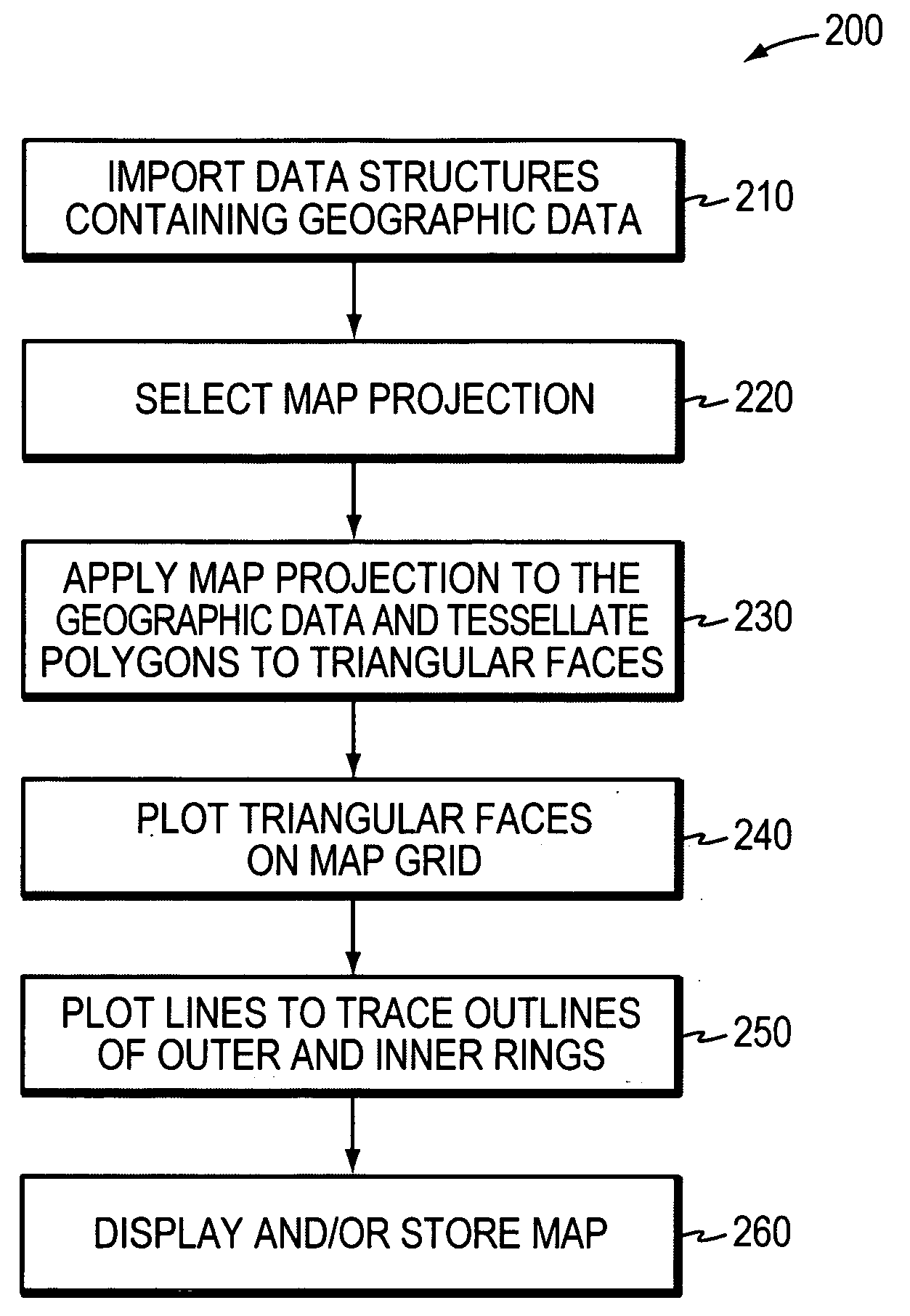Polygon trimming using a modified azimuthal map projection
a technology of azimuthal map and polygon data, applied in the field of trimming of polygon data, can solve the problems of presenting technical challenges, affecting the accuracy of polygon trimming, so as to avoid the effect of longitude wrapping
- Summary
- Abstract
- Description
- Claims
- Application Information
AI Technical Summary
Benefits of technology
Problems solved by technology
Method used
Image
Examples
Embodiment Construction
[0036]FIG. 1A is a block diagram of an example computer system 100 in which the polygon trimming techniques described herein may be employed. The computer system 100 includes a processor 110, such as a central processing unit (CPU), one or more storage devices 170 for storing computer-executable instructions, such as hard disks or compact disk (CD) drives, as well as one or more input / output (I / O) devices 160, such as keyboards, mice, network connections or monitors. The computer system 100 further includes a memory, for example a Random Access Memory (RAM) that, at least when the computer system is operating, may store computer-executable instructions. For example the memory may store instructions that implements an operating system 180, such as the Windows™ operating system available from Microsoft Corp., the OSX™ operating system available from Apple Computer Corp., or the Linux™ operating system available from a variety of vendors, including Red Hat Corp. of Raleigh, N.C., as we...
PUM
 Login to View More
Login to View More Abstract
Description
Claims
Application Information
 Login to View More
Login to View More - R&D
- Intellectual Property
- Life Sciences
- Materials
- Tech Scout
- Unparalleled Data Quality
- Higher Quality Content
- 60% Fewer Hallucinations
Browse by: Latest US Patents, China's latest patents, Technical Efficacy Thesaurus, Application Domain, Technology Topic, Popular Technical Reports.
© 2025 PatSnap. All rights reserved.Legal|Privacy policy|Modern Slavery Act Transparency Statement|Sitemap|About US| Contact US: help@patsnap.com



